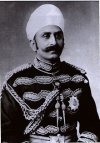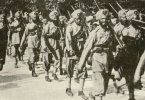No, there was no appeal. The money was returned to Uncle Sam. To be honest, I'm a little surprised this is receiving so much debate- I'd intended it to be a minor little thing. Not complaining, mind you- your participation in this is always appreciated!ITTL, he did something similar after losing the 1916 election. That is, Wilson issued an executive order transferring $500 million from the US Treasury to J.P. Morgan, to cover the latter's losses after the Anglo-French collateral proved only able to cover around ~75% of their debts. And Wilson did so without consulting either the President-Elect or Congress. Naturally, it had Hughes, Congress, and constitutional lawyers up in arms, and which Hughes immediately took J.P. Morgan to court for after he was sworn in as President of the United States.
Typically, J.P. Morgan held his ground and claimed Wilson had every right to do as he did, and it's not any of Hughes' business. He forced the matter to go to the Supreme Court which finally ruled 5-4 that Wilson had no authority whatsoever to do what he did, and ordered J.P. Morgan to return the $500 million to the US Treasury.
The only reason Hughes didn't drag Wilson to court was that he didn't want to set a precedent for personally prosecuting a former president, besides, just setting precedent that big time corporations are not above the law much less the CONSTITUTION OF THE UNITED STATES was apparently enough for Hughes. That, and by declaring his actions unconstitutional, Hughes - through the Supreme Court - had already managed to tar Wilson's reputation.
Speaking of which, @Kaiser Wilhelm the Tenth, did J.P. Morgan appeal the Supreme Court ruling? Did the order to return the money to the government account for inflation/deflation?
Hopefully, a better precedent than OTL can be set with regards to corporate power... although if I'm being honest I still don't think that likely...



